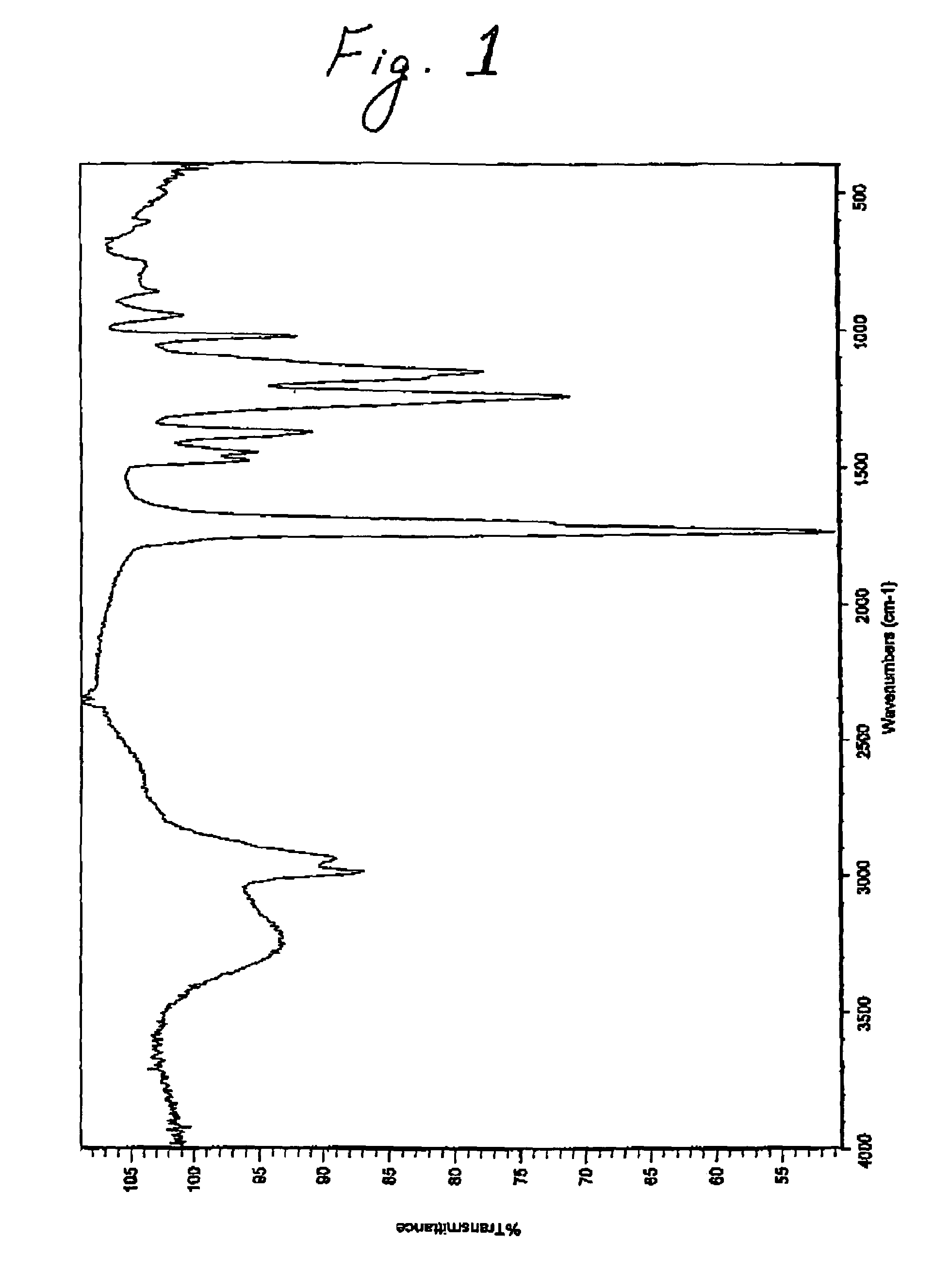Precursor colorant composition for latex paint
a colorant composition and precursor technology, applied in the field of copolymer surfactants, can solve the problems of inability to achieve flow and leveling performance comparable to solvent-based paints, inability to match the properties of latex paints, and heurs are, notably and disadvantageously, very sensitive to paint compositions, so as to improve pigment dispersion
- Summary
- Abstract
- Description
- Claims
- Application Information
AI Technical Summary
Problems solved by technology
Method used
Image
Examples
example 1
Preparation of Copolymer Surfactant (1)
[0106]The emulsion polymerization reaction is carried out in a four-neck flask of about 4 L (1 U.S. gallon) capacity under nitrogen purge. The reaction flask is equipped with a condenser, a thermometer, an agitator and a feeding pump. The flask is immersed in a temperature controlled water bath maintained at a constant temperature within about ±0.1° C. of the set point. Table 1 shows the ingredients used for the copolymer surfactant and in its preparation:
[0107]
TABLE 1Ingredients for Preparation of Copolymer Surfactant (1)ComponentParts (by weight)Initial Charge in ReactorDeionized water47.2Ammonium nonylphenyl ether persulfate (CO 436)0.1Monomer EmulsionDeionized water12.1Nonylphenol ethoxylate (CO 630)1.3Methacrylic acid11.8Vinyl acetate10.8Butyl acrylate6.7Tristyrylphenylpoly(ethyleneoxy) methacrylate0.4Diallyl phthalate0.03Initiator Solution 1Ammonium persulfate0.1Deionized water2.0Initiator Solution 2Ammonium persulfate0.1Deionized water3....
example 2
Preparation of Copolymer Surfactant (2)
[0111]The procedures and conditions in this example were the same as in Example 1 except that Table 2 shows the ingredients used for the copolymer surfactant and in its preparation:
[0112]
TABLE 2Ingredients for Preparation of Copolymer Surfactant (2)ComponentParts (by weight)Initial Charge in ReactorDeionized water46.4Ammonium nonylphenyl ether persulfate0.1Monomer EmulsionDeionized water13.9Ammonium nonylphenyl ether persulfate0.5Mixed surfactant (ABEX 2020)1.2Methacrylic acid9.6Vinyl acetate8.5Butyl acrylate3.6Ethyl methacrylate5.3Tristyrylphenylpoly(ethyleneoxy) methacrylate2.9Ethylene glycol diacrylate0.03Initiator Solution 1Ammonium persulfate0.06Deionized water2.6Initiator Solution 2Ammonia persulfate0.07Deionized water3.0Ammonium nonylphenyl ether persulfate0.13Mixed surfactant (ABEX 2020)0.3RinseDeionized water1.8Total100.0
[0113]The ABEX 2020 mixed surfactant used was a proprietary formulation obtained from Rhodia Inc. and is believed to...
example 3
Preparation of Copolymer Surfactant (3)
[0114]The procedures and conditions in this example were the same as in Example 1 except that Table 3 shows the ingredients used for the copolymer surfactant and in its preparation:
[0115]
TABLE 3Ingredients for Preparation of Copolymer Surfactant (3)ComponentParts (by weight)Initial Charge in ReactorDeionized water49.4Ammonium nonylphenyl ether persulfate0.1Monomer EmulsionDeionized water13.9Ammonium nonylphenyl ether persulfate0.4Mixed surfactant (ABEX 2020)1.2Methacrylic acid9.8Vinyl acetate9.8Ethyl methacrylate9.8Tristyrylphenylpoly(ethyleneoxy) methacrylate0.6Initiator Solution 1Ammonium persulfate0.03Deionized water0.7Initiator Solution 2Ammonia persulfate0.04Deionized water2.0Ammonium nonylphenyl ether persulfate0.14Mixed surfactant (ABEX 2020)0.3RinseDeionized water1.5Total99.71
PUM
| Property | Measurement | Unit |
|---|---|---|
| number average molecular weight | aaaaa | aaaaa |
| temperature | aaaaa | aaaaa |
| temperature | aaaaa | aaaaa |
Abstract
Description
Claims
Application Information
 Login to View More
Login to View More - R&D
- Intellectual Property
- Life Sciences
- Materials
- Tech Scout
- Unparalleled Data Quality
- Higher Quality Content
- 60% Fewer Hallucinations
Browse by: Latest US Patents, China's latest patents, Technical Efficacy Thesaurus, Application Domain, Technology Topic, Popular Technical Reports.
© 2025 PatSnap. All rights reserved.Legal|Privacy policy|Modern Slavery Act Transparency Statement|Sitemap|About US| Contact US: help@patsnap.com

